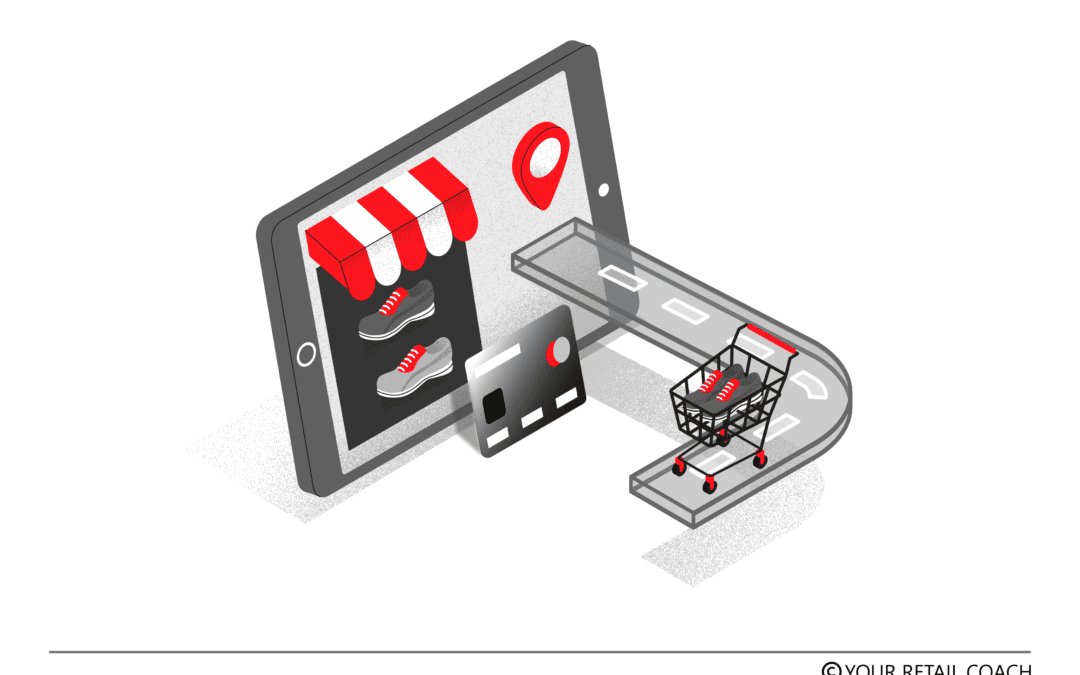Hyper-localisation is an alignment strategy that helps retail brands and businesses mould into the requirements of a locality-based market environment. Marketing-wise, it helps retailers tailor their value propositions to cover the needs and expectations of highly specific, local market segments. Hyper-localisation surpasses the notions of traditional localisation by focusing on cities, neighbourhoods, and sometimes even stores.
Suppose that the owner of a supermarket store wants to open another store/branch on the other side of the city where the market conditions are slightly different. Hyper-localisation requires that the owner customises the new store and its marketing and other business aspects to align with the specific requirements of the new marketplace.
Hyper-localisation is nothing but customising a business comprising its marketing, operations, HR, and other key functions to suit any local market environment. In the context of this blog, the emphasis will be more on the marketing aspects. Further in this blog, we will explore how retail brands and businesses are using the hyper-localisation strategy to create, sustain, and enhance the quality of experience they deliver to customers.
Hyper-Localised Offerings
Hyper-localisation requires businesses to zoom into the local demands and trends. This makes it possible for them to customise their offerings to the specific needs and preferences of a local customer base. This could also mean differences in the offerings of one store from another of the same retail brand or business. Reflecting the needs and wants of customers by offering the right range of products goes on to boost customer experience. An ideal example to understand this is a bakery business. Hyper-localised retail requires that retailers seek to understand the factors that shape the demand and preferences in a local market. Some of the key considerations would include:
- Presence and offerings of competitors (a direct indicator of local demand patterns)
- Storing and consumption requirements (e.g. fried items are for immediate consumption)
- Price sensitivity (e.g. fancy items that cost premium may be less preferred)
- Demand patterns (types of products that get more sold, e.g. salt over sweet)
- Demographic factors like age (e.g. heavily sweetened products may be avoided by people after a certain age or extra-cheesy pizzas may be preferred more by youngsters)
- Impact of culture and tradition (e.g. certain meat-based products may not be accepted)
- Possibility of attracting new segments (additional product lines/product variants, e.g. if there is a potential segment of office-goers in the vicinity, tea/coffee/quick snacks could be added)
Personalisation at the Hyper-Local Level
Hyper-localisation serves as an enabler of personalization in retail. Adopting hyper-localisation means that retailers must have a good understanding and vision of local customer segments.
Contextual personalisation allows retailers to personalise various aspects of customer experience and customer journey. Product recommendations can be made based on alignment with local trends and preferences and not merely based on generalised online behaviour. Retailers can send targeted promotional offers and discounts relevant to the local context. A common example of this is the publishing of discounted sale advertisements using print media for upcoming local festivals. Even the in-store experience can be adjusted to reflect the preferences and expectations of local communities.
Retail hyper-localisation creates the possibility to customise how retailers communicate with their customers as brands. This includes simple measures like the use of local language(s), cultural and traditional references, local music/art, and any other element that helps resonate better with a local customer base. Using technology, retailers can deliver geo-targeted advertising content to customers specific to common geography and interests. There is also scope for sending personalised communication like emails or smartphone messages/notifications (in adherence to prior permission and applicable laws) to highlight relevant promotional campaigns, privilege membership benefits, etc.
Delivering more a personalised experience helps create better and long-lasting memories.
Targeted Promotions
Hyper-localisation is an effective tool for targeting specific customer segments with curated promotional campaigns that have the potential to resonate more strongly in a local market. It enhances the possibility of achieving higher levels of customer engagement and conversion rates.
In contrast to generic approaches, retail hyper-localisation allows to focus on specific customer segments within a given geography. It becomes possible to craft promotional campaigns in the context of local needs and aspirations. For example, a QSR may emphasise promoting its cold beverage product line during the summer months. With a better understanding of target segments and the personas, the targeting and impact of this promotional campaign can be made more effective.
Hyper-localised retail promotions tend to elicit stronger feelings of attachment. It is not that someone is searching online for cat food and a cat food brand is the next thing on their social media feed. More than data, empathy is far more powerful in resonating with fellow humans. If cat food is a highly searched item in a given geography, product recommendations in that geography should also include cat care products. Cat parents would love that. Data and automation should not lead to mechanised solutions when we are talking about customer experience.
Reaching the right audience enhances the chances of grabbing their attention and encouraging them to take advantage of the hyper-local marketing promotional campaigns. The right promotions reaching the right audience also improve brand perception.
Enhanced In-Store Experience
In retail, the in-store experience covers the entirety of the perception that customers generate and accumulate in their shopping journey when they physically visit a store. This journey starts the moment they enter a store. It continues with their interaction with various perceptive elements in the store. It ends with their purchase (or no purchase) decision and exiting the store.
Hyper-localisation is providing a more localised and personalised in-store experience to visiting customers. It can enhance the quality of the shopping journey and experience of customers making it more fulfilling and memorable for them. Hyper-localisation of in-store experience can take place via:
- Store layout and design (e.g. premium appearance in posh localities)
- Merchandising and planogram (e.g. stuffed shelves can give the appearance of being busy)
- Customer support (e.g. personalised versus standardised)
- Level of technology integration (e.g. self-service options, interactive displays, etc.)
- Sensory elements like colour, lighting, music, and scent
- Overall brand experience (e.g. brand voice, staff training, value-added services, etc.)
The variations in in-store experience should not lead to compromising with core brand values. Without reasons for major shifts in brand positioning or the applicability of strong market variables, the elements of in-store experience should not vary in extensive degrees.
Community Engagement
By customising offerings and other aspects of business to align with the needs and aspirations of a locality or neighbourhood, retailers can exhibit a strong degree of acknowledgement and understanding of local values and considerations. This helps reflect concern and prioritising of what matters within a community. Collaborating with local entities creates the scope of building a more rooted connection with local communities. Supporting local events serves as an example here. Community engagement is not meant to be treated as a strategy. It should be seen as an entity becoming a part of the local community. Business prerogatives may require a store to be shut but that should not deter the essence of becoming a part of where one serves.
Recap
Retail hyper-localisation allows businesses to tailor their offerings and other marketing aspects to create superior customer experience. Localisation also does the same but hyper-localisation is done at the level of specific, neighbourhood, locality-based market levels.
Hyper-localisation requires businesses to focus on local demands and trends. This makes it feasible to customise offerings to cater to the specific needs and preferences of a local customer base. Product recommendations are more accurate in hyper-localisation because of concentrated emphasis on a relatively small base of customers. For the same reason, promotions can be curated and targeted with higher efficacy. The element of in-store experience can be localised to a greater extent enhancing the quality of the shopping journey and experience of local customers. Aligning with the needs and aspirations of a locality or neighbourhood, retailers can exhibit a stronger message of acknowledgement and understanding of local values and considerations.
Done right, the efforts of hyper-localisation often prove to be successful in shaping customer experience in local markets and positioning as a local brand.
For enquiries on retail business solutions or to speak to one of our expert retail consultants, please drop us a message and we will reach out to you.
FAQs
What is an example of hyper-localised customer experience in retail?
For example, a QSR (Quick Service Restaurant) may emphasise promoting its cold beverage product line during the summer months. With a better understanding of target segments, the targeting and impact of such a promotional campaign can be made more accurate and effective. The quality of the insights and understanding of local customers affects how promotional content is written or created, by which channels or platforms they are published, highlighting of any relevant issue, if any local celebrity or influencer should be involved, etc. Such a curated campaign increases the possibility of resonating strongly with the target segment of customers. This marks the beginning of having a positive influence on customer experience by winning their attention and creating potential interest to carry forward the shopping journey.
What is the difference between personalisation and localisation?
If your bank wishes you on your birthday, that is personalisation. If such a practice is perceived as an intrusion into privacy (say in your region) and your bank decides not to continue with that practice, it is localisation. In personalisation, the focus is on individual users/groups or small segments. Content, products, or services are tailored to align with their specific needs, preferences, and behaviours. The same is the objective in localisation but the focus is on a larger segment classified on the grounds of factors like geography, culture, language, etc.
What are the challenges in hyper-local retailing?
Hyper-local retailing is a retail business strategy that seeks to customise offerings and experiences to suit the needs, preferences, and aspirations of a specific, locality, neighbourhood-based market. Some of the biggest challenges in hyper-local retailing are highlighted below.
Hyper-local retailing demands highly specific and comprehensive data to peek into the features, preferences, and aspirations of a small segment of users. It is difficult to access such specific data. Even if there is a medium to access such data, it immediately raises concerns of data privacy putting the integrity of organisations on thin ice. It can face resistance and retaliatory action from all corners including government bodies.
Creating or curating content for a specific user base can entail a lot of carefulness and insight. It is often difficult for outsiders to comprehend the nuances of local cultures and languages. Also, it is not commercially feasible to have teams for content management for every locality or even a cluster of stores.
Maintaining consistency in brand voice or personality becomes difficult beyond a certain point. Different stores in different localities can necessitate adjustments in offerings, pricing, layout, promotions, value-added services, etc.
In operations management, hyper-localisation can pose challenges in having standardised processes making it difficult to enforce uniform operational standards and procedures. It can create a chaotic state of affairs in enterprise-level operations management requiring additional resources to keep things in order.
Last but not least, it is also not easy to measure the ROI of hyper-localisation campaigns. Every store or cluster of stores may have to be treated as a separate unit(s) for better financial management. This would significantly increase the burden of workload at all levels.











